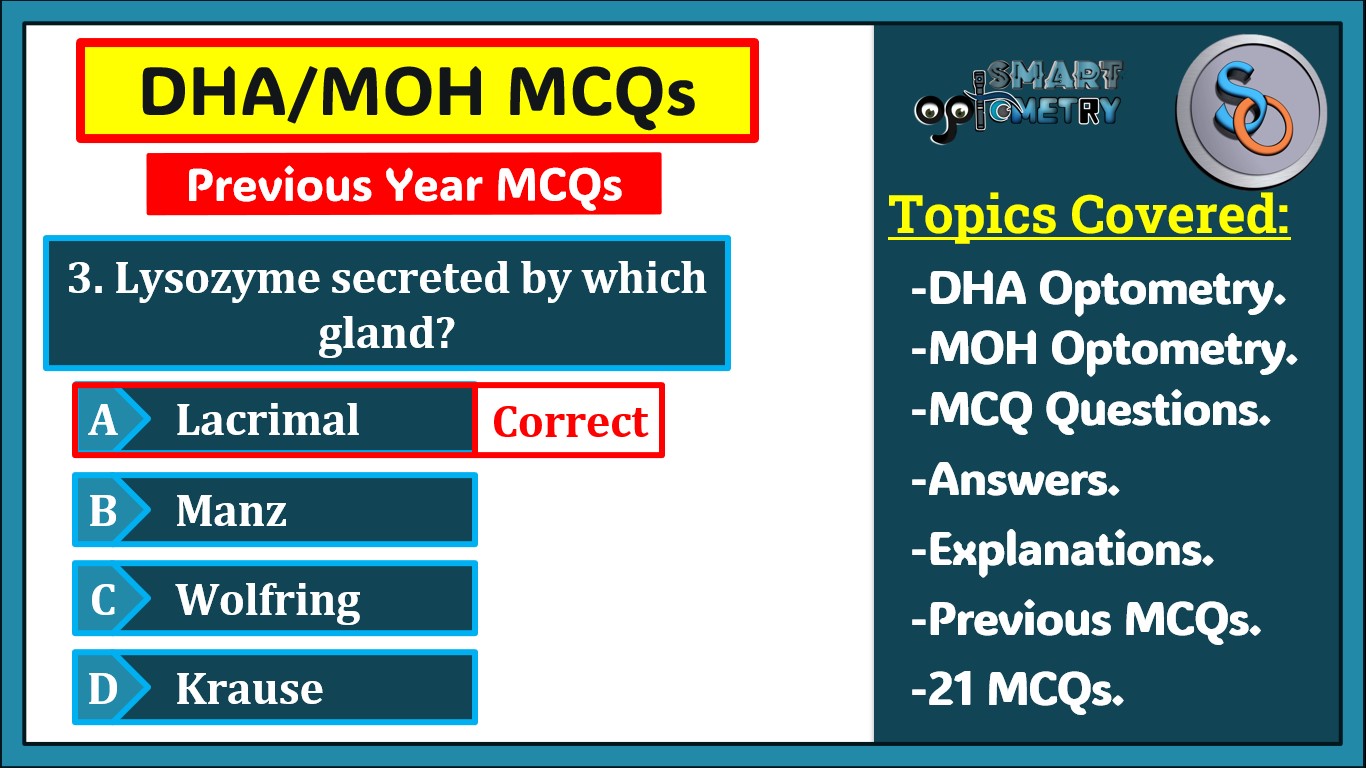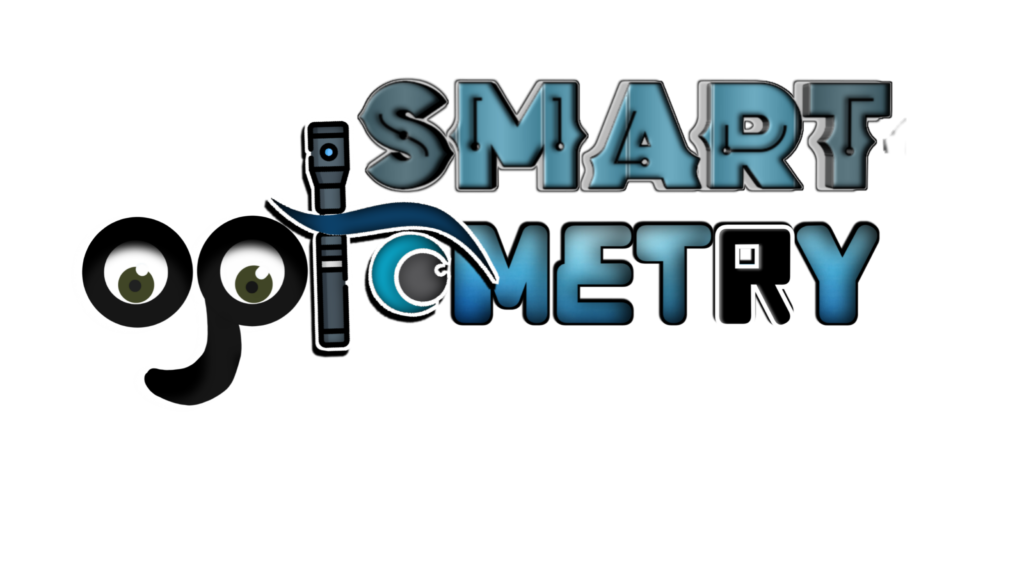- 22. Symptoms of corneal ulcer are following except:
- A. Mucopurulent discharge
- B. Pain in the eye
- C. Redness of the eye
- D. Watering
Click “Show more” to see the answer and explanation.
Ans: Mucopurulent discharge
Explanation:
A corneal ulcer typically presents with pain, redness, and tearing (watering). Mucopurulent discharge is more commonly associated with bacterial conjunctivitis rather than a corneal ulcer.
- 23) Trachoma patient have inward turned eyelash that is
- (A) Entropion
- (B) Third stage of trachoma
- (C) Ectropion
- (D) Trichiasis
- 24) Not an error of refraction is
- (A) Astigmatism
- (B) Hypermetropia
- (C) Myopia
- (D) Presbyopia
- (E) None of the above
Click “Show more” to see the answer and explanation.
Ans: (D) Presbyopia
Explanation:
Presbyopia is a condition associated with aging, where the eye loses its ability to focus on near objects due to the hardening of the lens. It is not considered a true refractive error like myopia, hypermetropia, or astigmatism.
- 25) Objective study of the refraction is done by
- (A) Snellen’s chart
- (B) Synaptophore
- (C) Retinoscopy
- (D) Maddox rod test
- 26) Magnification of direct ophthalmoscopy
- a. 5 X.
- b. 10 X.
- c. 12 X.
- d. 15X.
- 27. Lysozyme secreted by which gland
- A) Lacrimal
- B) Manz
- C) Wolfring
- D) Krause
- 28. Earliest visual rehabilitation occurs with
- a. Phacoemulsification
- b. ICCE + IOL
- c. ECCE + IOL
- d. ICCE alone or laser
Click “Show more” to see the answer and explanation.
Ans: Phacoemulsification
Explanation:
Phacoemulsification is a modern cataract surgery technique that allows for faster recovery of vision compared to other methods like ICCE (Intracapsular Cataract Extraction) and ECCE (Extracapsular Cataract Extraction).
- 29. One may perform poorly on a stereopsis test if
- a) Suppression of one eye
- b) Unequal retinal image quality in the two eyes
- c) Amblyopia
- d) All of the above
Click “Show more” to see the answer and explanation.
Ans: d) All of the above
Explanation:
Stereopsis, or depth perception, requires proper binocular vision. Conditions like suppression, unequal retinal images (anisometropia), and amblyopia (lazy eye) can all affect stereopsis performance.
- 30) A patient’s manifest refraction in BE: -2.50DS. His PRA was found to be 6.50DS without correction. What is his amplitude of accommodation?
- a) 4.00D
- b) 5.00D
- c) 5.50D
- d) 6.50D
Click “Show more” to see the answer and explanation.
Ans: d) 6.50D
To get AOA from PRA we can use the formula: AOA = PRA (without minus sign) + 2.50
Here PRA is 6.5D without correction. So actual PRA after subtraction of correction will be: 6.5 – 2.50 or 4.5D.
So, AOA will be AOA = 4.5 + 2.5 or 6.5D
- 31) A patient’s manifest refraction in BE: -2.00DS. Sustained blur was reported while adding minus lenses with -6.00DS. What is his amplitude of accommodation?
- A) 6.00D
- B) 6.50D
- C) 8.00D
- D) 8.50D
Click “Show more” to see the answer and explanation.
Ans: B) 6.50D
Explanation:
To get AOA from PRA we can use the formula: AOA = PRA (without minus sign) + 2.50
Here PRA is 6.0 without correction. So, actual PRA after subtraction of correction will be: 6.0 – 2.00 or 4.0D.
So, AOA will be AOA = 4.0 + 2.5 or 6.5D
- 32) Three in one CL solution except
- a) Optifree
- b) Aqua lens
- c) Doxysept
- 33) Suitable low vision aid for a patient with weak hand
- a) Stand Magnifier.
- b) Hand Magnifier
- c) Spectacle Magnifier
- 34. Fifth nerve palsy could cause:
- a. Ptosis.
- b. Proptosis.
- c. Neuropathic keratopathy.
- d. Lagophthalmos.
Click “Show more” to see the answer and explanation.
Answer: c. Neuropathic keratopathy.
Explanation:
The fifth cranial nerve, also known as the trigeminal nerve, is responsible for sensation in the face, including the cornea. When the trigeminal nerve is affected, it can lead to neuropathic keratopathy (also known as neurotrophic keratopathy). This condition is characterized by a reduction or loss of corneal sensation, leading to impaired healing, corneal ulcers, and in severe cases, corneal perforation.
- 35. After 48 hours of a cataract extraction operation, a patient complained of ocular pain and visual loss. On examination, this eye looked red with ciliary injection, corneal oedema and absent red reflex. The first suspicion must be:
- a. Secondary glaucoma.
- b. Anterior uveitis
- c. Bacterial endophthalmitis.
- d. Acute conjunctivitis
- 36. Topical steroids are contraindicated in a case of viral corneal ulcer for fear of:
- a. Secondary glaucoma
- b. Cortical cataract.
- c. Corneal perforation
- d. Secondary viral infection.
- 37. The sure diagnostic sign of corneal ulcer is
- a. Ciliary injection
- b. Blepharospasm
- c. Miosis
- d. Positive fluorescein test.
- 38. The effective treatment of dendritic ulcer of the cornea is:
- a. Surface Anesthesia
- b. Local corticosteroids
- c. Systemic corticosteroids
- d. Acyclovir ointment
- 39. Herpes simplex keratitis is characterized by:
- a. Presence of pus in AC
- b. No tendency to recurrence
- c. Corneal hypoesthesia
- d. Tendency to perforate
- 40. Bacteria, which can attack normal corneal epithelium:
- a. Neisseria gonorrhoea.
- b. Staphylococcal epidermidis.
- c. Moraxella lacunata.
- d. Staphylococcal aureus.
If you’re preparing for the Dubai Health Authority (DHA) or Ministry of Health (MOH) license exams as an optometrist, this blog is an invaluable resource. We’ve compiled 21 previous years’ DHA and MOH exam questions specifically tailored for optometry students and professionals. Each question is accompanied by detailed answers and explanations, helping you to thoroughly understand the concepts and improve your chances of success.
This blog serves as an all-in-one guide, offering DHA MCQs online and MOH MCQs online that are essential for your exam preparation. Whether you’re looking for a DHA MCQs book, Dha optometry mcqs with answers, DHA MCQs PDF, or DHA MCQs paper, this blog has you covered. We provide a comprehensive collection of DHA exam questions for optometrists, including DHA question papers and DHA questions & answers for optometry.
Similarly, for those preparing for the MOH license exam, we’ve included a range of MOH exam questions for optometrists. You’ll find MOH question papers, MOH questions & answers for optometry, and even MOH MCQs books and PDFs to aid in your studies. Our collection is designed to simulate the actual exam experience, ensuring that you are well-prepared for both the DHA and MOH exams.
Whether you are searching for DHA question papers for optometrists or MOH question papers for optometrists, this blog offers a reliable resource to guide your study process. Dive into these expertly curated questions and answers to boost your confidence and knowledge as you prepare for your DHA and MOH optometry exams.
- Check Our Courses: Ophthalmic Instrumentation, Clinical Refraction, Contact Lens, Binocular Vision, Dispensing Optics, MCQs in Optometry
- Download our App “Optometry Notes & MCQs” from Google Play Store.




